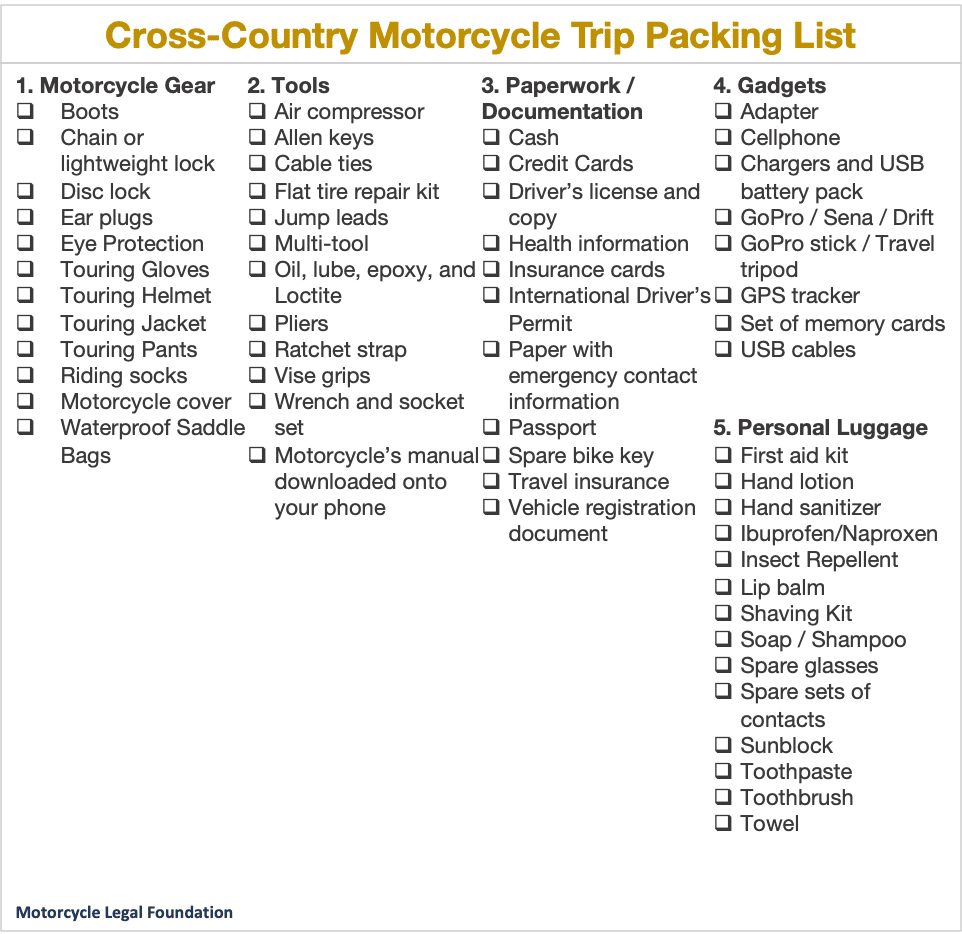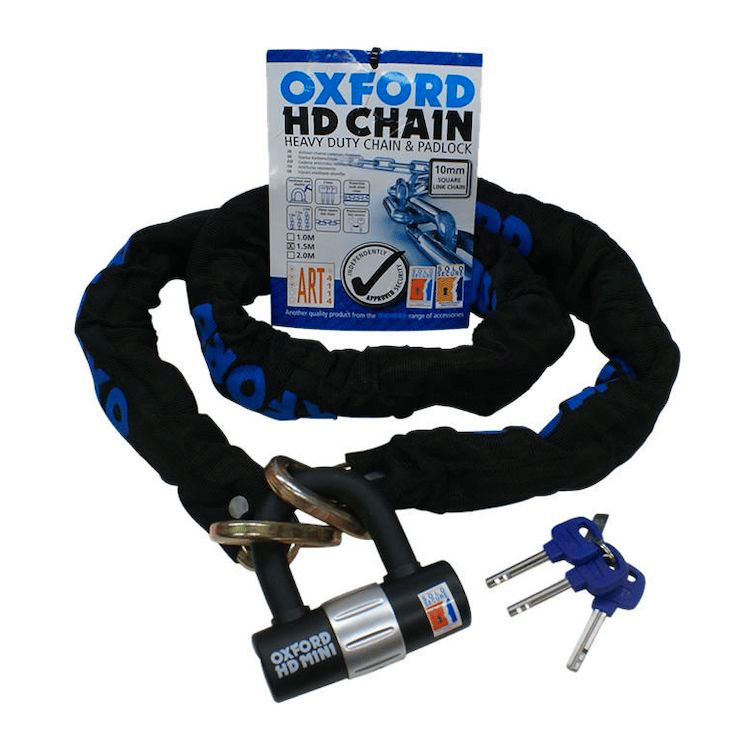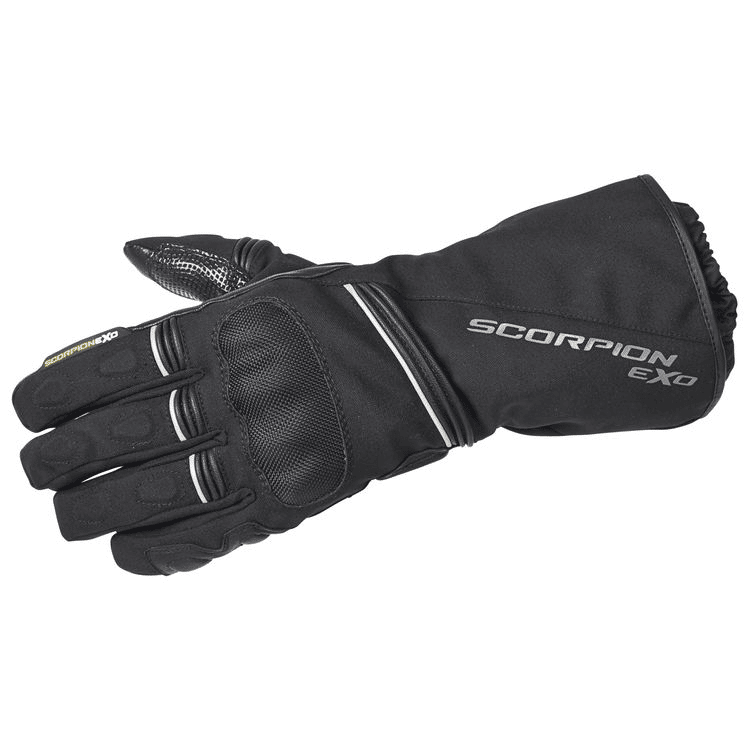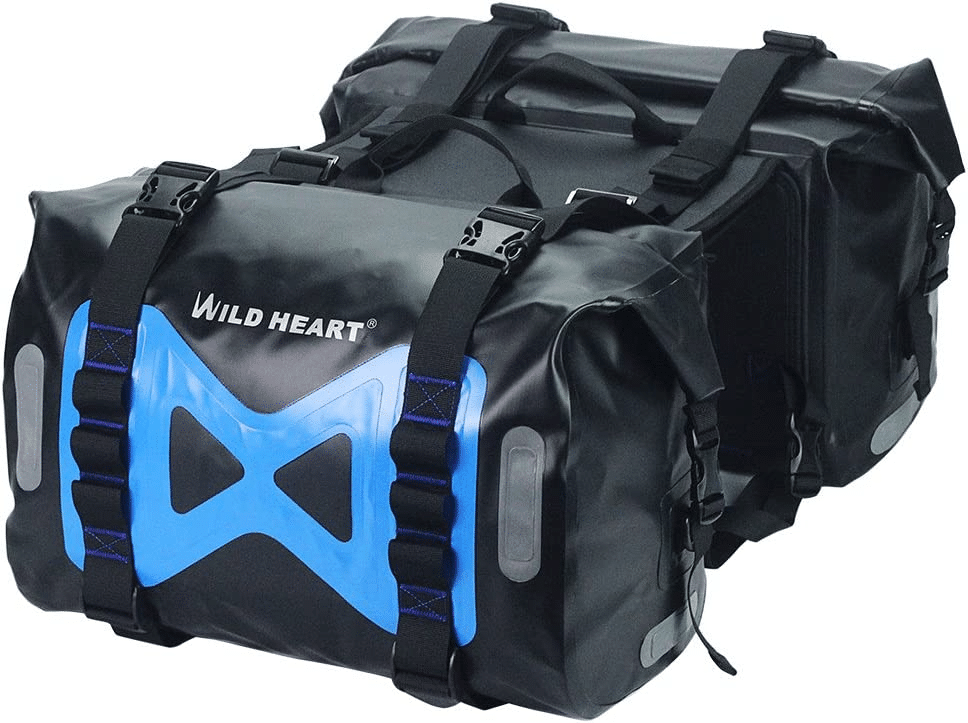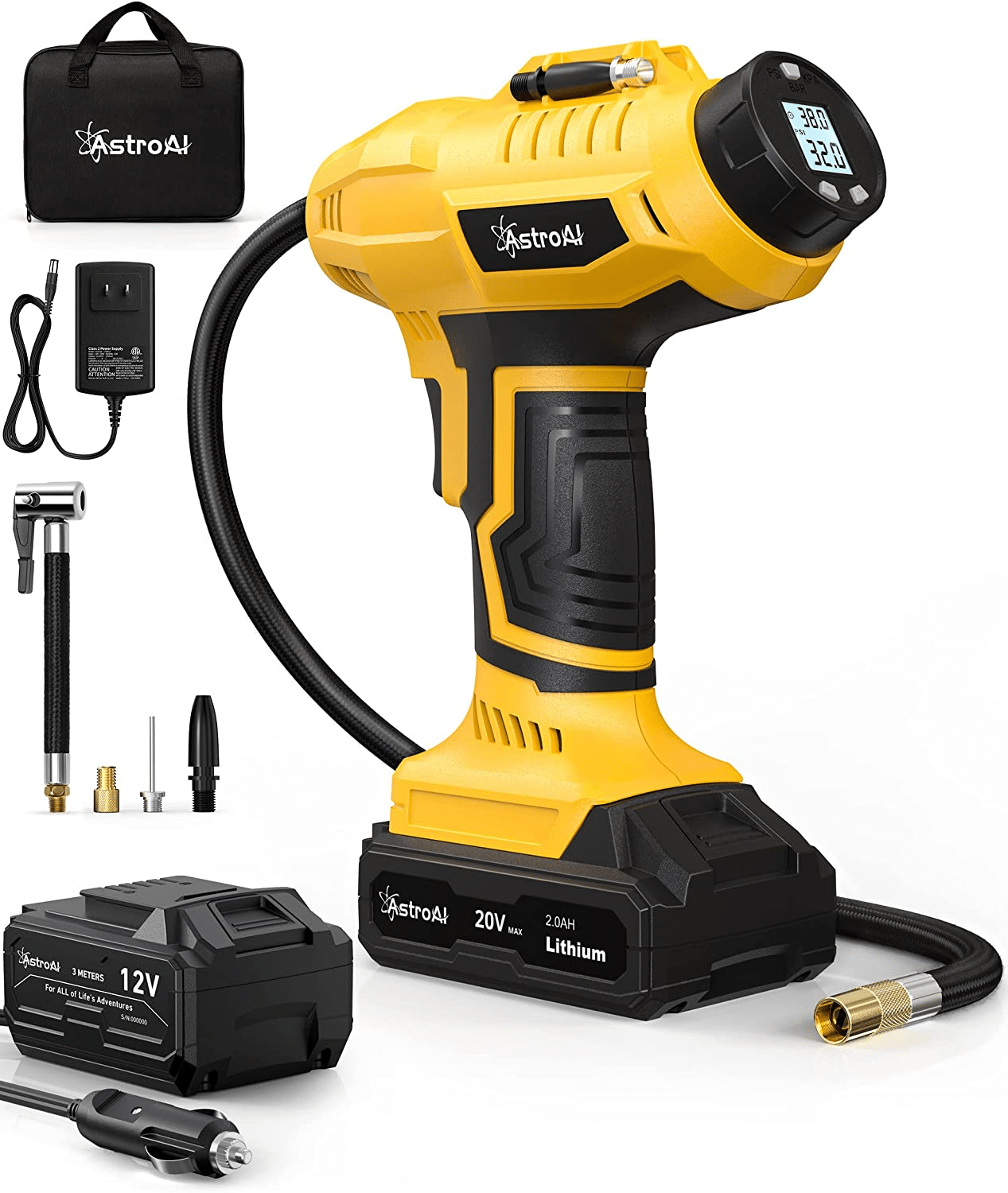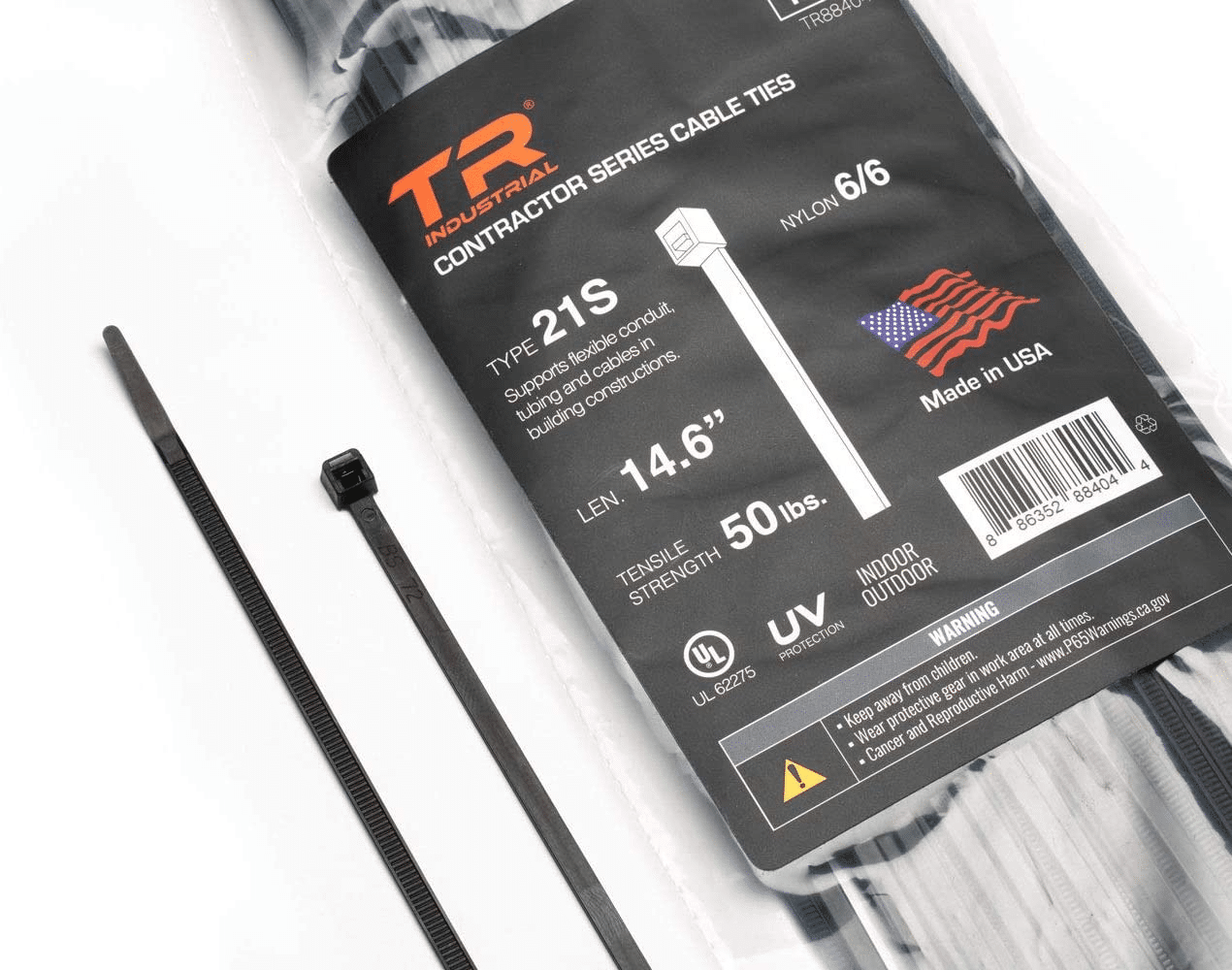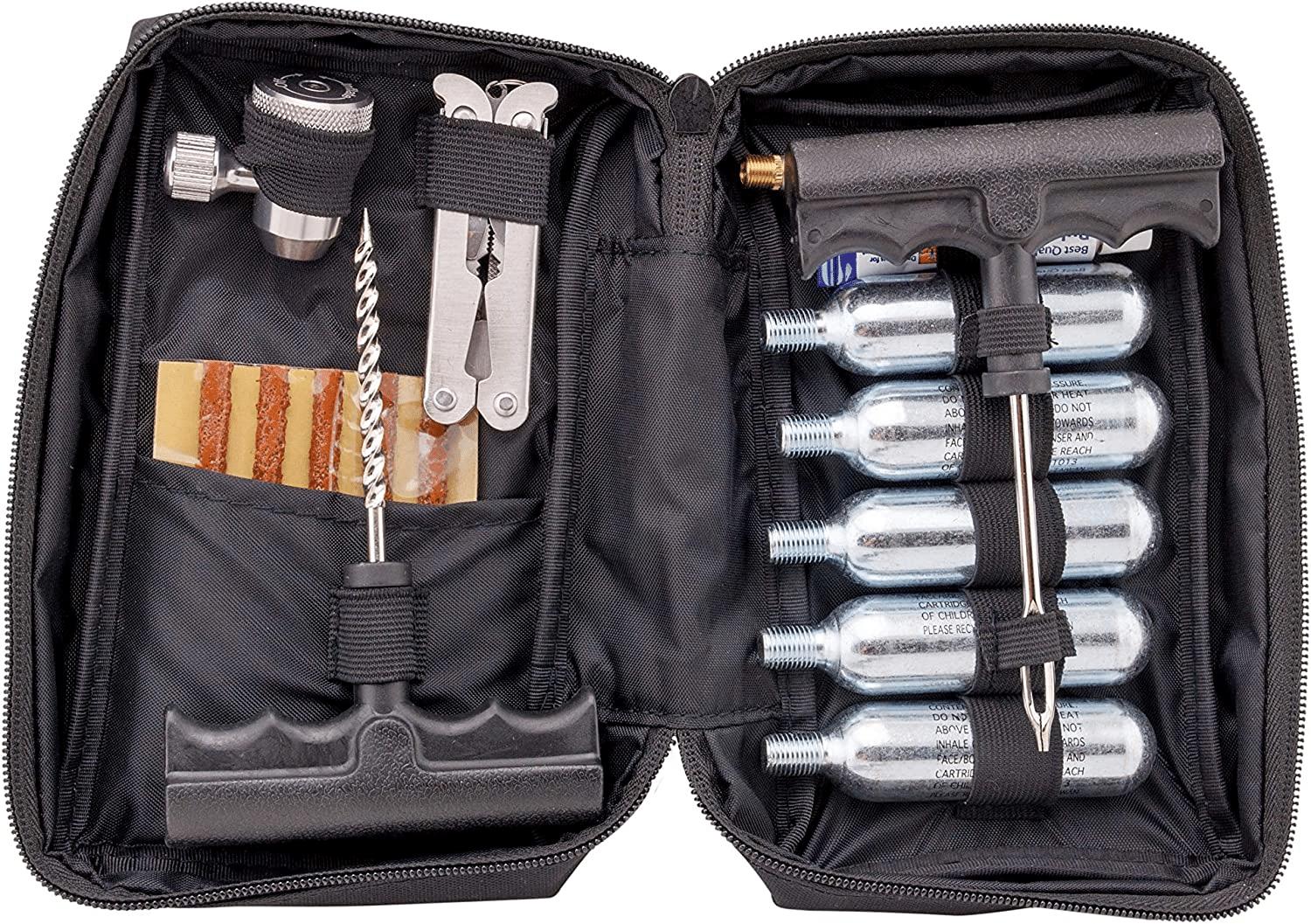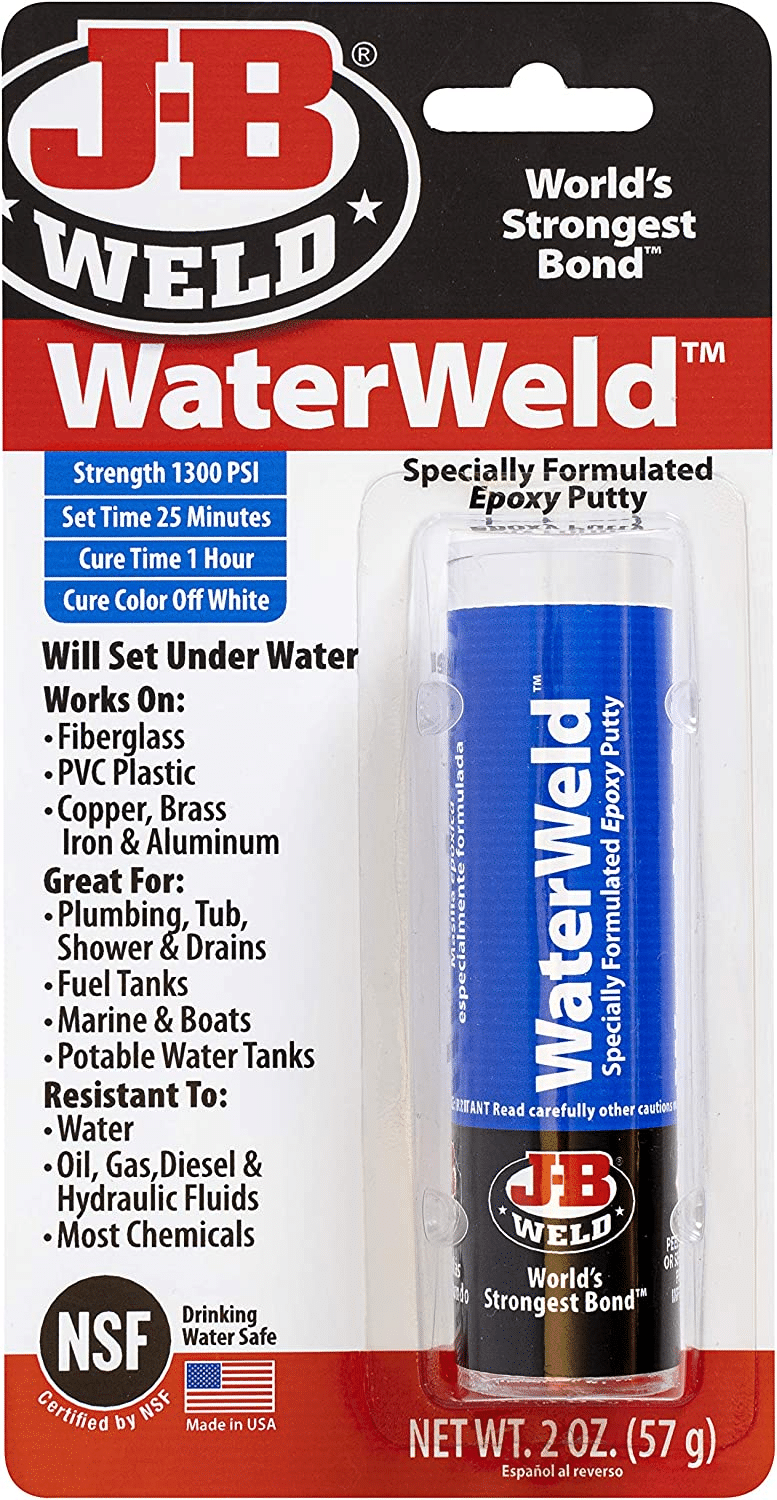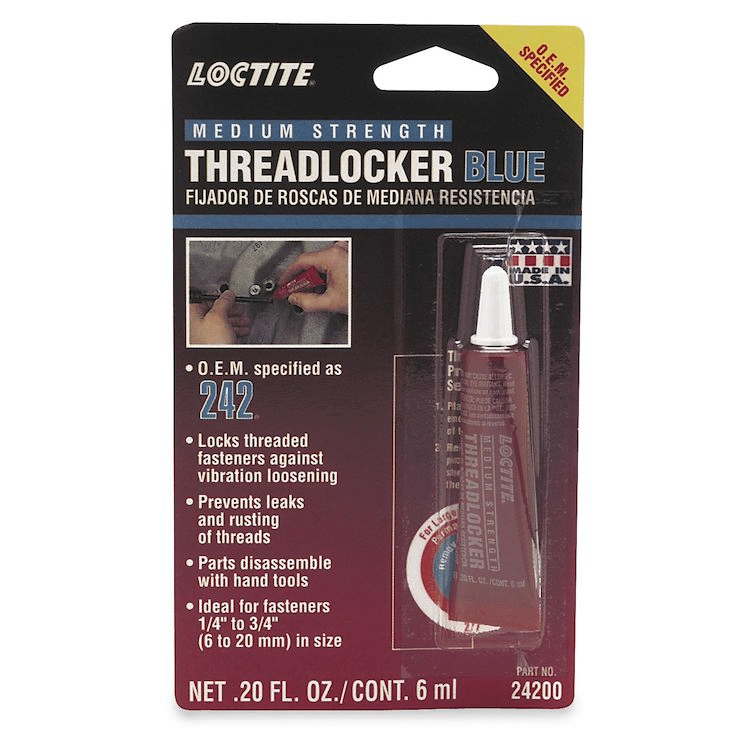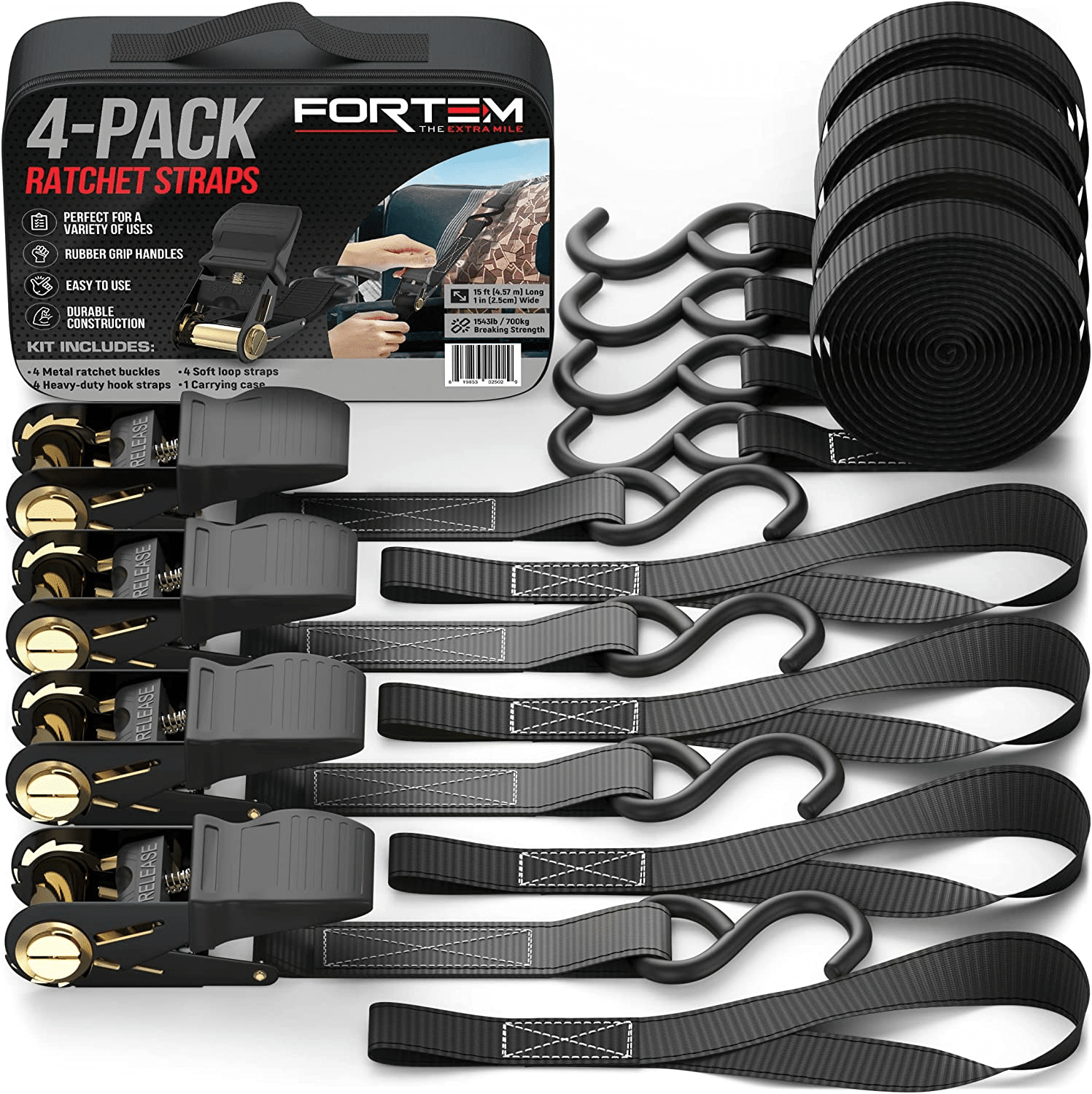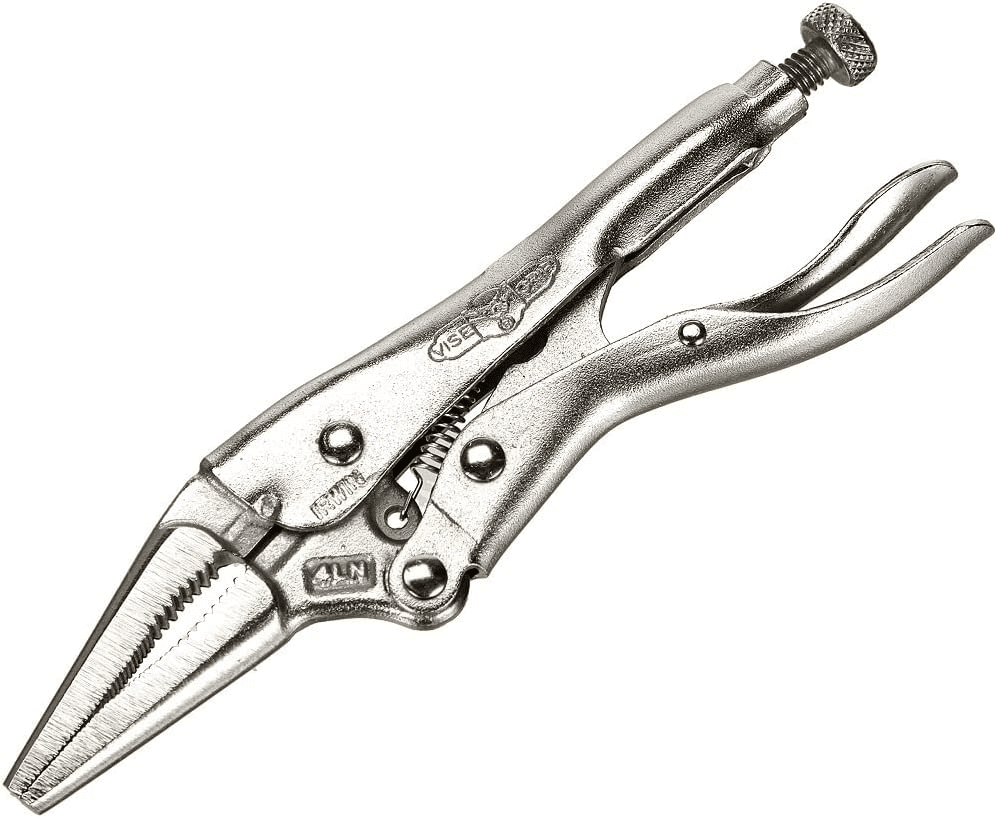When it comes to packing for a cross-country motorcycle trip , there are several important things to keep in mind, including packing lightly, preparing for emergencies, and dressing in layers.
Less is More – Pack Lightly
One of the most difficult parts about preparing for a cross-country motorcycle trip is only taking what you need… nothing more and nothing less. No matter how hard we try, the tendency is to overpack. How often have you come back from a trip to find that you didn’t wear half of what you intended? Ideally, you want to pack enough clothes for a few days. Pants, sweaters, and sweatshirts can often be worn several days in a row as long as they don’t get soiled or sweaty. Ideally, you should only need to pack extra underclothes, t-shirts, and socks.
Roll your clothes tightly rather than folding them to conserve even more space;not only does this save space, but also keeps your clothes from wrinkling. When it comes to packing toiletries, be sure to buy the small travel size variations or pour your favorite products into small plastic containers. It’s also a good idea to place any liquids inside a Ziplock bag just in case you get a leak.
Prepare for Emergencies
One of the most important things to consider while riding on two wheels is to be prepared for emergencies. You won’t have the luxury of waiting for help inside the protection of a car, so you must be extra prepared. If you get a flat tire or break down on the side of the road, make sure you have a working cell phone and some roadside assistance and towing service. This may be available through your motorcycle insurance company or a separate roadside service such as AAA or the American Motorcycle Association (AMA). Although most cell phone service providers cover large areas, it’s always a good idea to check with your service provider and find out if your cross-country motorcycle trip will encounter any areas with no or sparse service or signals.
Carrying a basic motorcycle toolkit is an absolute must as well. This can save you some downtime for small fixes you can do yourself, such as changing bulbs in headlights, brake lights, or turn signals. Sometimes you might find loose parts that rattle from being on bumpy roads. Even if you’re not a mechanic, it’s not uncommon for another motorcyclist or mechanic to stop by that may be able to help. Many bikes come with their own tool bags, but if yours doesn’t, be sure to pick one up. Other useful items for your emergency kit include a flashlight, first aid kit, extra bulbs, batteries, flares or reflectors, a calling card, or spare change to make a phone call in case you don’t have cell service.
Layers, Layers, Layers… and Easy Access
It’s important to wear protective gear at all times – comfortable motorcycle riding pants, jacket, gloves, boots, and a durable motorcycle helmet. Choose motorcycle gear made of leather or special materials to withstand motorcycle crashes and the varying weather conditions you may encounter. Gear made of bright colors such as yellow and reflective areas are also recommended, but if you’re set on wearing all black, you can also buy reflective tape and decals to place on your gear and helmet.
Earplugs are another necessity. Even if you wear a full-face helmet, continuous air noise can cause hearing loss with prolonged riding. You can buy the disposable ones, or you can order custom earplugs that are based on a mold taken off your ear. You can also consider investing in a helmet with additional safety features, such as noise protection.
Be prepared for changing weather. Dress in layers so that you can easily add more layers as it gets cold. Or, as it gets warmer, you can remove layers. Especially in cold weather, you want to layer up and dress comfortably while avoiding getting too sweaty. In the heat, you want to stay protected while avoiding getting too dehydrated. Make sure you are confident riding in inclement weather as well, as high winds or patches of rain may prove difficult otherwise and hold up your trip.
Your extra clothing should be placed in a saddlebag or tank bag where you can easily access them. Rain gear (jacket, pants, waterproof booties), gloves, etc. should be readily available in case you need to pull over on the side of the road to quickly change.
Cross-Country motorcycle trip packing list
We put together a comprehensive checklist for you to know exactly what you need to pack for your cross country motorcycle trip. By the end of this section you will find a downloadable image for you to keep this useful checklist in your files.
Motorcycle Gear
- Boots
- Chain or lightweight lock
- Disc lock
- Ear plugs
- Eye Protection
- Touring Gloves
- Touring Helmet
- Touring Jacket
- Touring Pants
- Riding socks
- Motorcycle cover
- Waterproof Saddle Bags
Tools
- Air compressor
- Allen keys
- Cable ties
- Flat tire repair kit
- Jump leads
- Multi-tool
- Oil, lube, epoxy, and Loctite
- Pliers
- Ratchet strap
- Vise grips
- Wrench and socket set
- Motorcycle’s manual downloaded onto your phone
Paperwork / Documentation
- Cash
- Credit Cards
- Driver’s license and copy
- Health information
- Insurance cards
- International Driver’s Permit
- Paper with emergency contact information
- Passport
- Spare bike key
- Travel insurance
- Vehicle registration document
Gadgets
- Adapter
- Cellphone
- Chargers and USB battery pack
- GoPro / Sena / Drift
- GoPro stick / Travel tripod
- GPS tracker
- Set of memory cards
- USB cables
Personal Luggage
- First aid kit
- Hand lotion
- Hand sanitizer
- Ibuprofen/Naproxen
- Insect Repellent
- Lip balm
- Shaving Kit
- Soap / Shampoo
- Spare glasses
- Spare sets of contacts
- Sunblock
- Toothpaste
- Toothbrush
- Towel
Downloadable Checklist
Download the image below, and save it on your smartphone!
